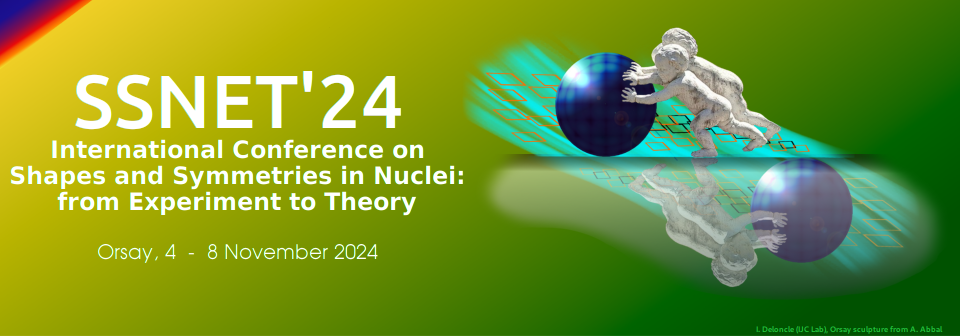Orateur
Description
Single-j calculations for (𝑗)𝑛 configurations with n = 3,..,2j+1 can be performed using a semi-empirical approach, provided that the energies and absolute electromagnetic transition rates are known for the two-particle (hole) nucleus. This approach was already successfully applied in the case of protons in the (𝜋ℎ9/2)3 nucleus 211𝐴𝑡 [1]. At the Cologne Tandem Accelerator of the Institute for Nuclear Physics we have tested these relations by measuring lifetimes of excited states in the (𝜋𝑔9/2)𝑛 isotones with N = 50. We started the studies in the two proton nucleus 92𝑀𝑜 where the previously unknown B(E2:4+1 → 2+1 ) value, was measured with high precision using the electronic 𝛾 −𝛾 fast timing technique [2]. Subsequently we applied the same technique in 93𝑇𝑐 and 94𝑅𝑢 [3].
Work supported by DFG Grant JO391/18-2.
[1] V. Karayonchev, et al., Phys. Rev. C 106, 044321 (2022).
[2] M. Ley, L. Knafla, J. Jolie, A. Esmaylzadeh, A. Harter, A. Blazhev, C.
Fransen, A. Pfeil, J.-M. Regis, P. Van Isacker, Phys. Rev. C 108 (2023).
[3] M. Ley, J. Jolie, A. Blazhev, L. Knafla, A. Esmayalzadeh, C. Fransen, A Pfeil, J.M. Régis, P. Van Isacker et al., submitted to Phys. Rev. C.

